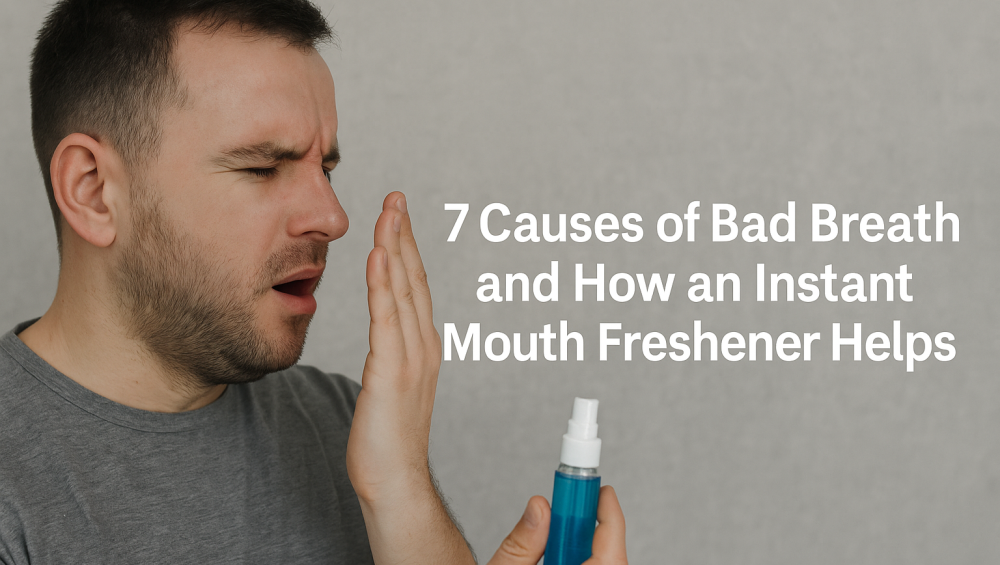Bad breath, or halitosis, is a common problem that can affect confidence, relationships, and work interactions. While persistent odour often points to deeper oral or health issues, using an instant mouth freshener can give quick relief in public situations while you work on the root cause.
1. Poor Oral Hygiene and Quick Breath Freshener Use
Neglecting brushing and flossing allows food particles to feed bacteria, producing unpleasant volatile sulfur compounds.
Solution:
- Brush at least twice a day with fluoride toothpaste
- Floss or use interdental brushes daily
- Rinse with an antimicrobial mouthwash
How a quick breath freshener helps: Keeps your breath neutral between brushing sessions when you can’t access your toothbrush.
2. Tongue Coating and Breath Strips for Odour Control
A coating on the tongue traps bacteria, food debris, and dead cells, contributing to bad breath.
Solution:
- Clean your tongue daily with a scraper or toothbrush
- Stay hydrated to reduce buildup
How breath strips help: Provide fast freshness during meetings or travel until you can clean your tongue properly.
3. Dry Mouth and Portable Mouth Spray Solutions
Saliva washes away food particles and bacteria. When saliva flow decreases due to dehydration, medications, or mouth breathing, odour intensifies.
Solution:
- Drink water throughout the day
- Chew sugar-free gum to stimulate saliva
- Avoid alcohol-based mouthwashes
How a portable mouth spray helps: Offers quick odour relief when hydration isn’t immediately possible.
4. Strong-Odour Foods, Drinks, and On-the-Go Fresheners
Garlic, onions, coffee, and alcohol produce odour compounds that linger in your breath long after eating.
Solution:
- Rinse or brush after consuming strong foods
- Eat raw fruits and vegetables to naturally cleanse your mouth
How an on-the-go freshener helps: Quickly masks lingering food odours in social or professional settings.
5. Gum Disease, Cavities, and Temporary Fresh Breath Options
Gum disease and tooth decay create spaces for bacteria to multiply, causing chronic odour.
Solution:
- Visit your dentist for professional cleaning and treatment
- Maintain proper oral hygiene daily
How a temporary fresh breath option helps: Controls odour for a short time while you get professional dental care.
6. Medical Conditions and Breath Care Aids
Sinus infections, GERD, uncontrolled diabetes, and some systemic diseases can cause distinctive breath odours.
Solution:
- Consult a doctor if bad breath persists despite proper oral care
- Treat the underlying medical condition
How breath care aids help: Manage odour during treatment or flare-ups.
7. Tobacco, Nicotine, and Breath Freshening Alternatives
Smoking and chewing tobacco cause lasting bad breath, staining, and gum irritation.
Solution:
- Quit tobacco products entirely
- Follow a strict oral hygiene routine
How breath freshening alternatives help: Mask odour temporarily but cannot reverse tobacco’s effects.
Daily Routine for Fresh Breath
- Brush twice daily and floss once
- Clean your tongue each morning
- Stay hydrated throughout the day
- Limit odour-heavy foods before important events
- Carry a discreet instant mouth freshener in your pocket, purse, or desk for fast freshness anytime







